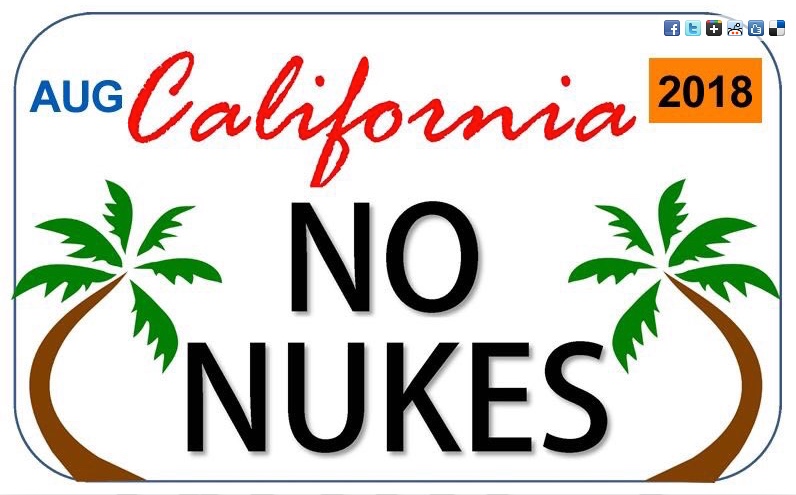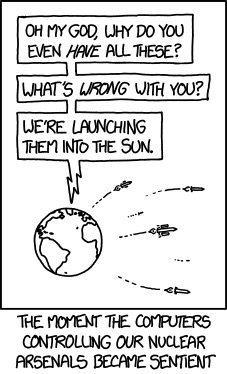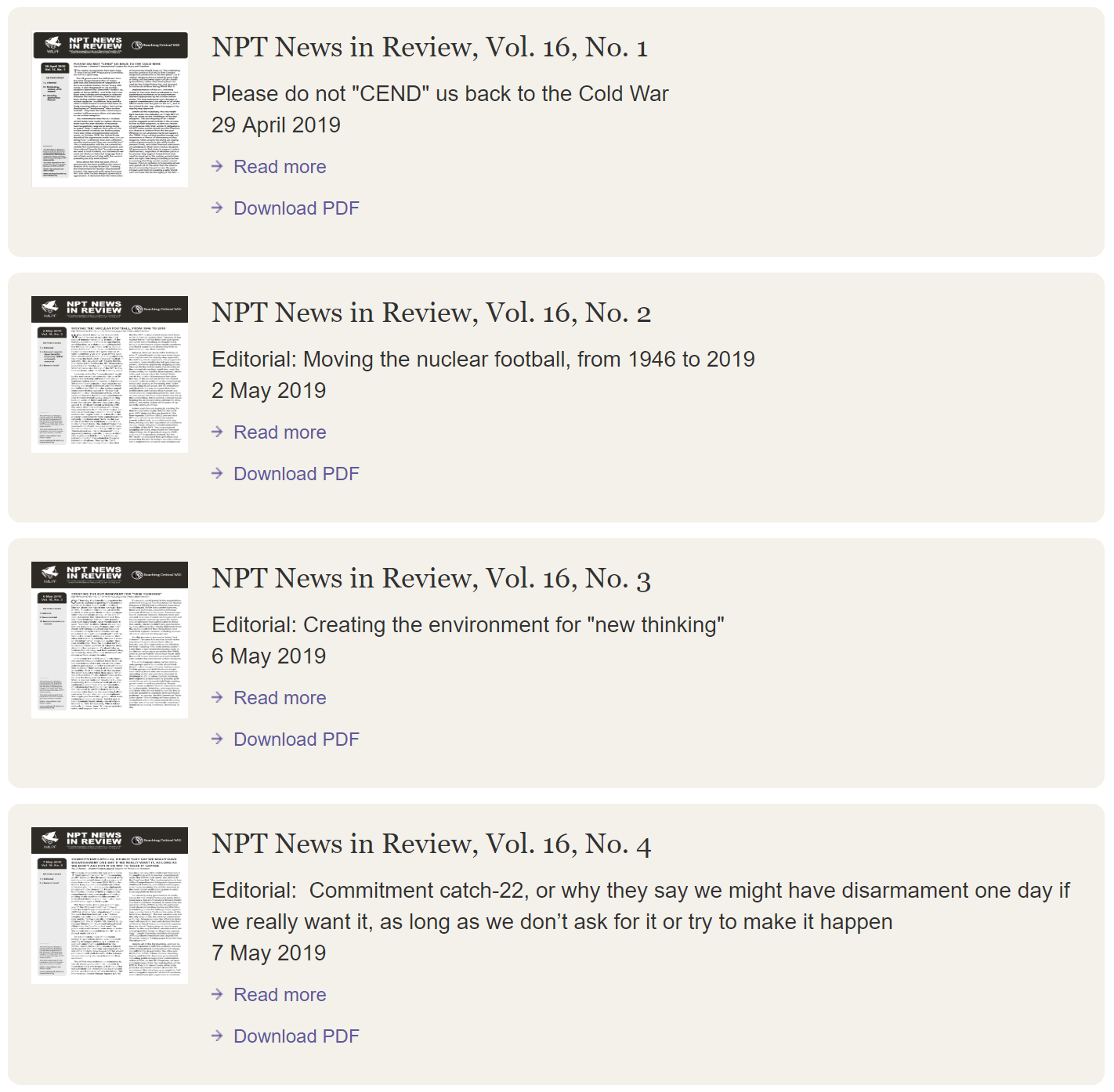Recent News
Nothing Found
It seems we can’t find what you’re looking for. Perhaps searching can help.
Abolishing Nuclear Weapons is a Moral Imperative
View Recording of the March 9th PDA CNM Community Gathering:
PDA CNM welcomed Archbishop John C. Wester, Archbishop of Santa Fe, and our own executive director of Nuclear Watch New Mexico, Jay Coghlan, to speak at their March 9, 2022 monthly gathering: “[Archbishop Wester's] courage in speaking out against the proliferation of nuclear weapons inspires us at PDACNM to follow his example and continue the fight against this peril, especially given the threat of a possible imminent war between two nuclear powers.
Jay Coghlan, executive director of Nuclear Watch New Mexico, has worked successfully against radioactive incineration at the Los Alamos National Lab, and in Clean Air Act, Freedom of Information Act and National Environmental Policy Act lawsuits against the Department of Energy. He prompted a 2006 independent study that concluded plutonium pits last at least a century, refuting the NNSA’s assertion that we “need” new-design nuclear weapons and expanded plutonium pit production.”
The Nuclear Ban Treaty
Overview
The U.N. Treaty
on the Prohibition of Nuclear Weapons
On 7 July 2017 – following a decade of advocacy by ICAN and its partners – an overwhelming majority of the world’s nations adopted a landmark global agreement to ban nuclear weapons, known officially as the Treaty on the Prohibition of Nuclear Weapons. It will enter into legal force once 50 nations have signed and ratified it.
Prior to the treaty’s adoption, nuclear weapons were the only weapons of mass destruction not subject to a comprehensive ban, despite their catastrophic, widespread and persistent humanitarian and environmental consequences. The new agreement fills a significant gap in international law.
It prohibits nations from developing, testing, producing, manufacturing, transferring, possessing, stockpiling, using or threatening to use nuclear weapons, or allowing nuclear weapons to be stationed on their territory. It also prohibits them from assisting, encouraging or inducing anyone to engage in any of these activities.
Why a ban?
A nation that possesses nuclear weapons may join the treaty, so long as it agrees to destroy them in accordance with a legally binding, time-bound plan. Similarly, a nation that hosts another nation’s nuclear weapons on its territory may join, so long as it agrees to remove them by a specified deadline.Nations are obliged to provide assistance to all victims of the use and testing of nuclear weapons and to take measures for the remediation of contaminated environments. The preamble acknowledges the harm suffered as a result of nuclear weapons, including the disproportionate impact on women and girls, and on indigenous peoples around the world.
The treaty was negotiated at the United Nations headquarters in New York in March, June and July 2017, with the participation of more than 135 nations, as well as members of civil society. It opened for signature on 20 September 2017. It is permanent in nature and will be legally binding on those nations that join it.
Nuclear weapons are the most inhumane and indiscriminate weapons ever created. That is why it is time to end them, before they end us.
Nuclear weapons are the most inhumane and indiscriminate weapons ever created. They have catastrophic humanitarian and environmental consequences that span decades and cross generations; they breed fear and mistrust among nations, as some governments can threaten to wipe out entire cities in a heartbeat; the high cost of their production, maintenance and modernisation diverts public funds from health care, education, disaster relief and other vital services. Banning these immoral, inhumane weapons under international law was a critical step along the path to ending them.
With the adoption of the UN Treaty on the Prohibition of Nuclear Weapons (TPNW) on July 7th, 2017, the world's majority took a critical step towards making that nuclear-weapon-free future a reality.
Nuclear Weapons Ban Treaty News & Updates
ONE YEAR OF U.S. NUCLEAR WEAPONS SPENDING WOULD PROVIDE 300,000 ICU BEDS, 35,000 VENTILATORS AND SALARIES OF 75,000 DOCTORS
MATTHEW IMPELLI | newsweek.com
The amount of money spent in one year by the U.S. on nuclear weapons could instead provide 300,000 ICU (intensive care unit) beds, 35,000 ventilators and 75,000 doctors’ salaries, according to the International Campaign to Abolish Nuclear Weapons (ICAN)–a “coalition of non-government organizations promoting adherence to and implementation of the UN [United Nations} nuclear weapon ban treaty.”
In its recent report, the group stated that, according to armscontrol.org, the U.S. spent $35.1 billion on nuclear weapons in 2019. The costs are based on reported averages, but the study noted that the $35.1 billion in nuclear weapons spending would instead pay for “300,000 beds in intensive care units, 35,000 ventilators, and the salaries of 150,000 U.S. nurses and 75,000 U.S. doctors.”
“Proud to be an American?” What an American admiral forgets about nuclear war
“Today, all these years later, the Trump administration is much more focused on acquiring new nuclear weapons systems than constraining or eliminating them. And the White House seems all too eager to walk away from the treaties and tools that were built to reduce these weapons’ greatest risks.”
MONICA MONTGOMERY | thebulletin.org

In late February, Adm. Charles Richard, head of US Strategic Command, told a House committee that the innovations going into a new nuclear warhead are what make him “proud to be an American.”
He was referring to the W93, a new nuclear warhead that will be used on submarine-launched ballistic missiles and that the Trump administration wants $53 million to start work on this year. While the design and timeline remain unclear, the administration forecasts that the price tag for developing and building this new weapon will reach over $1 billion per year in the next four years. The W93 would join or replace at least three other submarine-launched nuclear warheads that already exist and for which billions already have been and are still being spent to modernize.
Key Messages from the 2019 Doomsday Clock Announcement – ICAN
ICAN (International Campaign to Abolish Nuclear Weapons) believes that the success of people-powered change and the leadership of the majority of nations supporting the TPNW is a positive development these last years. ICAN’s success and the TPNW is a turning point for the world, and we will be working to turn it backwards from now.
Topline
– The success of the Treaty on the Prohibition of Nuclear shows that the vast majority of nations are taking action to solve the problem of nuclear weapons.
– A global movement against nuclear weapons is starting to turn the tide against nuclear weapons.
– Nuclear weapons are inhumane weapons of mass destruction that targets civilian populations and their use will violate international laws. The threat of Doomsday will exist until we eliminate these weapons. It is the only sane thing to do.
Supporting message
– We have many reasons to be hopeful, 70 countries have signed the Treaty to ban all nuclear weapons and the Treaty on the Prohibition of Nuclear Weapons is on its way to enter into force within a year
– Nine states are continuing to threaten the world with their weapons of mass destruction. We can’t simply wait for them to reverse course, all governments, cities, parliamentarians and people must contribute to nuclear disarmament efforts by supporting the TPNW
– We need to continue bringing democracy to disarmament in the face of unilateral threats to the security of humanity
– Trump has proven that when it comes to nuclear weapons agreements he is a wrecking ball not a builder. By undermining the INF treaty, the United States and Russia must stop celebrate their ‘Doomsday’ capabilities and return to the negotiating table to stop the new nuclear arms race.
Europe specific
– A new nuclear arms race between the US and Russia threatens the cities of Europe. This is the moment for Europe to show leadership by ending their obstruction to the Treaty on the Prohibition of Nuclear Weapons and make it clear they will not participate in a new arms race.
“Away from the media spotlight, massive progress is being made by a broad coalition of people dedicated to prohibiting and eliminating nuclear weapons. Stopping the slide towards midnight in the past year has been a Herculean task but we are slowly but surely turning the corner on a new more secure future. While the US and Russia embark on a new nuclear arms race, 70 countries have signed the Treaty to ban nuclear weapons, cities and regional governments are committing to the Treaty, and banks and pension funds are divesting from nuclear weapons production. Yes, there is so much work still to be done to save us from these reckless nuclear armed states, but today is a day to recognise the progress we are making for sanity in the face of irrational threats.”
Beatrice Fihn – Executive Director
International Campaign to Abolish Nuclear Weapons
CALIFORNIA LEADS THE WAY IN SUPPORT OF NUCLEAR DISARMAMENT
California State Legislature Passes Pro-Nuclear Disarmament Resolution
Sacramento–Assembly Joint Resolution 33 (AJR 33), introduced by Santa Barbara’s State Assembly member, Monique Limón, passed in the state Senate today by a vote of 22 to 8. This marks a huge step forward in California’s support of nuclear disarmament and puts the state at the forefront of this critical issue.
The resolution calls on federal leaders and our nation to embrace the Treaty on the Prohibition of Nuclear Weapons, make nuclear disarmament the centerpiece of our national security policy, and spearhead a global effort to prevent nuclear war. (More on the Treaty here.)
Rick Wayman, Deputy Director of the Nuclear Age Peace Foundation, a non-partisan, non-profit organization headquartered in Santa Barbara whose mission is to create a peaceful world, free of nuclear weapons, was asked by Limón to testify in support of the Resolution.
Nuclear Ban Treaty
Reaching Critical Will Twitter feed
Treaty on the Prohibition of Nuclear Weapons (PDF)
International Campaign to Abolish Nuclear Weapons
ICAN has posted a Flickr album of annotated photos of the UN Ban Treaty negotiations.
The Ban Treaty achievement was preceded by the three Conferences on the Humanitarian Impacts of Nuclear Weapons.
ICAN IGTV
The international campaign to abolish nuclear weapons on instagram (@nuclearban) tackling some of the more technical legal questions of the treaty: what does entry into force mean, what happens now? Joined with experts, they dive into international law and the TPNW (without getting too technical!) through instagram chats to help break it all down.
View this post on InstagramTim Wright in conversation with Associate Professor Treasa Dunworth of the University of Auckland
A post shared by ICAN (@nuclearban) on
View this post on InstagramA post shared by ICAN (@nuclearban) on
View this post on InstagramA post shared by ICAN (@nuclearban) on
Nothing Found
It seems we can’t find what you’re looking for. Perhaps searching can help.
Quotes
Nothing Found
It seems we can’t find what you’re looking for. Perhaps searching can help.
All Nuclear Arms Reduction and Non-Proliferation Updates & Recent News
2019 Preparatory Meeting for 2020 Nonproliferation Treaty Review Conference Ends in Failure
NPT Looks Ahead to 2020 Review Conference Without Consensus Recommendations
BY ALICIA SANDERS-ZAKRE | armscontrol.org
NPT states-parties failed to adopt a common set of recommendations for the 2020 Review Conference on the final day of the two week-long 2019 PrepCom on Friday, May 10. Nevertheless, most states expressed optimism in concluding statements about prospects for next year’s review conference and underlined the importance of action in the intervening 12 months on key NPT-related commitments.
The recommendations drafted by the chair, Syed Hussin of Malaysia, failed to garner consensus especially after a round of revisions that sought to take into account the suggestions of the majority of NPT states-parties led several nuclear-weapon states and some of their allies to express their displeasure and their support for the earlier draft. Since NPT states did not adopt the revised draft recommendations by consensus, the document will be issued instead as a working paper submitted by the PrepCom chair. The chair also issued an 8-paragraph reflection on the PrepCom.
In his closing remarks, the incoming president-designate of the 2020 Review Conference, Rafael Mariono Grossi of Argentina promised to “begin work on Monday” on an ambitious plan for consultations with states-parties.
He later tweeted: “As #NPT2019 closes work starts to prepare a successful Review of Non-Proliferation Treaty in 2020. I will consult extensively reach out to all. Everybody’s goal is success. No less.
As #NPT2019 closes work starts to prepare a successful Review of Non Proliferation Treaty in 2020. I will consult extensively reach out to all. Everybody’s goal is success. No less. @UN_Disarmament @CancilleriaARG @ArmsControlNow @NTI_WMD pic.twitter.com/pbaWHq2rsN
— Rafael MarianoGrossi (@rafaelmgrossi) May 10, 2019
Engel, McCaul Introduce Legislation to Maintain Limits on Russian Nuclear Forces
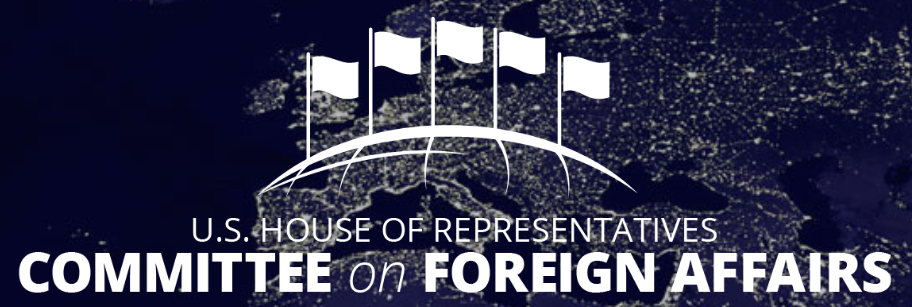 WASHINGTON—Representative Eliot L. Engel, Chairman of the House Committee on Foreign Affairs, and Representative Michael McCaul, the Committee’s ranking member, today introduced legislation calling on the Trump Administration to retain limits on Russia’s nuclear forces. The “Richard G. Lugar and Ellen O. Tauscher Act to Maintain Limits on Russian Nuclear Forces” calls for an extension of New Strategic Arms Reduction Treaty (New START) limits on Russia until 2026, as allowed under the Treaty, unless Russia violates the Treaty or until a new agreement in is in place that provides equal or greater constraints, transparency, and verification measures with regard to Russia’s nuclear forces.
WASHINGTON—Representative Eliot L. Engel, Chairman of the House Committee on Foreign Affairs, and Representative Michael McCaul, the Committee’s ranking member, today introduced legislation calling on the Trump Administration to retain limits on Russia’s nuclear forces. The “Richard G. Lugar and Ellen O. Tauscher Act to Maintain Limits on Russian Nuclear Forces” calls for an extension of New Strategic Arms Reduction Treaty (New START) limits on Russia until 2026, as allowed under the Treaty, unless Russia violates the Treaty or until a new agreement in is in place that provides equal or greater constraints, transparency, and verification measures with regard to Russia’s nuclear forces.
ARMS CONTROL TODAY – REMARKS: Gorging at the Nuclear Buffet Table
“It’s like showing up at a buffet and, instead of having a balanced meal, you say, “I will just gorge on every single capability that is out there.” When you only need a balanced meal to do the job, you don’t need to eat everything at the nuclear buffet table, including offensive and defensive weapons.
BY SEN. CHRIS VAN HOLLEN | armscontrol.org – May 2019
Unlike a dinner buffet where it’s “all you can eat at a fixed price,” the nuclear buffet table requires you to pay for everything. With the current spending plan, that is right now estimated to be $1.7 trillion over the next 30 years by the Congressional Budget Office. If you add on all the other capabilities this administration apparently wants to add on, you’re talking about an even bigger price tag.” Senator Chris Van Hollen, Appropriations Committee”
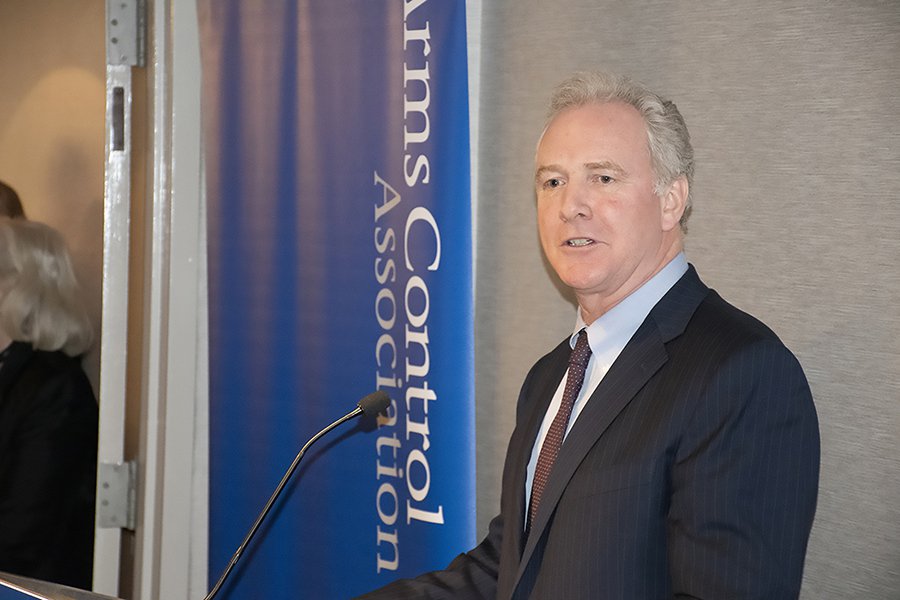
Before I ever thought of running for elected office, I interacted a lot with folks at the Arms Control Association and in the arms control community back in the 1980s. I grew up in a Foreign Service family in many places around the world, but one of the things that I remember most and that had a great impact on me was when I read Jonathan Shell’s New Yorker series, “The Fate of the Earth,” that described what would happen to the planet after a nuclear war.
Treaty’s End Would Give U.S., Russia Impetus to Make More Nukes: STUDY
“Neither country would have the same degree of confidence in its ability to assess the other’s precise warhead levels,” CNA’s Vince Manzo wrote in the study. “Worst-case planning is also more likely as a result.”
BY ARSHAD MOHAMMED & JONATHAN LANDAY | reuters.com
WASHINGTON (Reuters) — The demise of the only U.S.-Russia arms control pact limiting deployed nuclear weapons would make it harder for each to gauge the other’s intentions, giving both incentives to expand their arsenals, according to a study to be released on Monday.
The expiration of the New START accord also may undermine faith in the Nuclear Non-Proliferation Treaty, which calls on nuclear states such as the United States and Russia to work toward nuclear disarmament, as well as influence China’s nuclear posture, historically one of restraint.
Russia Pulls Out of I.N.F. Treaty in ‘Symmetrical’ Response to U.S. Move
BY ANDREW E. KRAMER | nytimes.com February 2, 2019
MOSCOW — President Vladimir V. Putin of Russia, in a decision that was widely expected, suspended his country’s observance of a key nuclear arms control pact on Saturday in response to a similar move by the United States a day before.
But adding to a sense that the broader architecture of nuclear disarmament has started to unravel, Mr. Putin also said that Russia would build weapons previously banned under the treaty and would no longer initiate talks with the United States on any matters related to nuclear arms control.
The Trump administration withdrew from the treaty, a keystone of the late Cold War disarmament pacts known as the Intermediate-Range Nuclear Forces Treaty, saying that Russia had been violating it for years. The decision holds the potential to initiate a new arms race, not only with Russia, but also China, which was never a signatory to the 1987 treaty.
The U.S. And Russia Are Stocking Up On Missiles And Nukes For A Different Kind Of War
NPR, February 1, 2019, 6:07 AM ET By GEOFF BRUMFIEL
The true battle over these new weapons may end up in Congress. While Republicans seem ready to back the Trump administration’s request for more battlefield nukes, the newly elected Democratic majority in the House of Representatives seems intent on blocking them.
“We do not view nuclear weapons as a tool in warfare,” Adam Smith, now the Democratic chair of the House Armed Services Committee, said in a speech in November. “It makes no sense for us to build low-yield nuclear weapons.”
Trump makes it official: The US is pulling out of a Cold War-era nuclear weapons treaty with Russia
The world’s two greatest nuclear powers are set to pull out of a crucial nuclear weapons treaty beginning this weekend. The Intermediate-Range Nuclear Forces Treaty, prohibits the production or testing of ground-launched cruise missiles with a range of 300 to 3,400 miles.
Trump says the U.S. will withdraw from the INF Treaty on Saturday.
BY AMANDA MACIAS | @amanda_m_macias | cnbc.com February 1, 2019
Brendan Smialowski | AFP | Getty ImagesRussia’s President Vladimir Putin listens while U.S. President Donald Trump speaks during a press conference in Helsinki, Finland.
WASHINGTON — President Donald Trump said Friday that the United States is ready to withdraw from a crucial nuclear weapons treaty with Russia on Saturday, a move that has sparked concerns of a budding arms race between the world’s two biggest nuclear powers.
The announcement comes a day after Russia and the United States said that discussions to save the Intermediate-Range Nuclear Forces Treaty had failed.
“Tomorrow, the United States will suspend its obligations under the INF Treaty and begin the process of withdrawing … which will be completed in six months unless Russia comes back into compliance by destroying all of its violating missiles, launchers, and associated equipment,” Trump said in a statement.
MERKLEY, SENATORS INTRODUCE BILL TO PREVENT NUCLEAR ARMS RACE
 merkley.senate.gov Thursday, January 31, 2019 WASHINGTON, D.C.
merkley.senate.gov Thursday, January 31, 2019 WASHINGTON, D.C.
“There’s a reason that kids today don’t do duck-and-cover drills in schools and that nobody has bomb shelters in their backyards anymore. That reason is because of key agreements like the Intermediate-Range Nuclear Forces Treaty and the New Strategic Arms Reduction Treaty,” said Merkley. “This era of stability is put at great risk by President Trump’s decision to unilaterally pull out of the INF Treaty. This decision ignores all the lessons from the Cold War. There is no doubt that Russia is violating the INF Treaty, but the right path forward is to work to bring them back into compliance, not free them to produce more nuclear weapons. Blowing up the Treaty risks the proliferation of nuclear-capable systems by Russia, threatening Europe and jeopardizing decades of bipartisan efforts to reduce nuclear dangers with Russia.”
“A nuclear arms race would endanger the entire world and threaten every single person in our country, and Congress has a responsibility to ensure that President Trump does not start one. President Trump’s imminent unilateral withdrawal from a bipartisan weapons treaty with Russia, without consulting Congress, would mean the Prevention of Arms Race Act is more important than ever,” said Gillibrand. “A reckless withdrawal would further damage our relationships with our allies, Russia would not be legally constrained from deploying larger numbers of their previously prohibited missiles, and the world would be much less safe. I urge my colleagues to support this bill to prevent a new arms race, and I will continue to do everything I can to keep all Americans safe.”
“Pulling out of the INF Treaty plays squarely into Russia’s hands while undermining America’s security and betraying our NATO allies,” Markey said. “The Trump administration needs to work more closely with our NATO allies to force Russia back into compliance. And as the chance of a confrontation between American and Chinese forces rises the Indo-Pacific, it makes little sense to add further ambiguity over whether U.S. missiles stationed around the region are nuclear-armed. This legislation will help ensure that we don’t match two major adversaries missile-for-missile, trigger a new nuclear arms race, and incur unacceptable amounts of risk in an already tenuous security environment.”
“If Donald Trump walks out of the INF Treaty, he will risk a new destabilizing and costly arms race and antagonize important allies,” said Wyden. “The administration should instead be working with European allies to pressure Russia back into compliance.”
The Senators’ legislation comes in advance of the Trump Administration’s expected action this weekend to unilaterally withdraw the United States from the Intermediate-Range Nuclear Forces Treaty (INF) treaty. The State Department set a February 2, 2019 deadline for Russia to return to compliance with the Treaty after a hasty and un-vetted declaration by President Trump in October that the United States intended to withdraw from the landmark treaty with Russia. The INF was originally signed by President Reagan and Soviet General Secretary Mikhail Gorbachev in 1987.
Russia & China Will Join Forces on Nuclear Weapons Strategy as U.S. Threatens to Leave Arms Deal
Russia and China are boosting bilateral cooperation on nuclear weapons strategies as they accused the United States of disrupting non-proliferation measures during a high-level meeting of the top five nuclear powers.
BY TOM O’CONNOR | newsweek.com January 30th, 2019
U.S. Under Secretary of State Andrea Thompson (center) and the U.S. delegation are seen in front of the Russian delegation as they attend a Treaty on the Non-Proliferation of Nuclear Weapons (NPT) conference consisting of the U.N. Security Council’s five permanent members (P5)—China, France, Russia, Britain and the U.S.—in Beijing, on January 30. THOMAS PETER/AFP/GETTY IMAGESRepresentatives of the so-called “Nuclear Five” met Wednesday in Beijing, at a time of heightened tensions between the Eastern and Western permanent members of the United Nations Security Council. The grouping included China, France, Russia, the United Kingdom and the U.S., signatories of the Treaty on the Non-Proliferation of Nuclear Weapons (NPT), a landmark document that sought to curb the spread of weapons of mass destruction during a decades-long arms race between Washington and Moscow.
As the White House threatened to scrap another Cold War-era weapons treaty, China and Russia have sought to align their approach in the face of what they considered to be a destabilizing U.S. position.
“Issues of our cooperation and Chinese-Russian and Russian-Chinese coordination will surely be the focus of our attention,” Russian Deputy Foreign Minister Sergey Ryabkov said, according to the state-run Tass Russian News Agency. “It is very productive work. In 2016, we approved the statement on strategic stability at the level of the leaders. It is just an example of how Russia and China are registering joint common positions more precisely.”
The U.S. has accused Russia of violating the 1987 Intermediate-range Nuclear Forces (INF) treaty, which established a mutual ban on ground-launched nuclear and conventional missiles within the ranges of around 310 and 3,420 miles. Washington argues that Russia’s new Novator 9M729 missile violates the treaty, while Moscow claims that the extensive U.S. missile shield in Europe could be used offensively as well, effectively breaching the deal.
2021 & Earlier
Nothing Found
It seems we can’t find what you’re looking for. Perhaps searching can help.
Resources
Nothing Found
It seems we can’t find what you’re looking for. Perhaps searching can help.
Nothing Found
It seems we can’t find what you’re looking for. Perhaps searching can help.
Quotes
Nothing Found
It seems we can’t find what you’re looking for. Perhaps searching can help.



